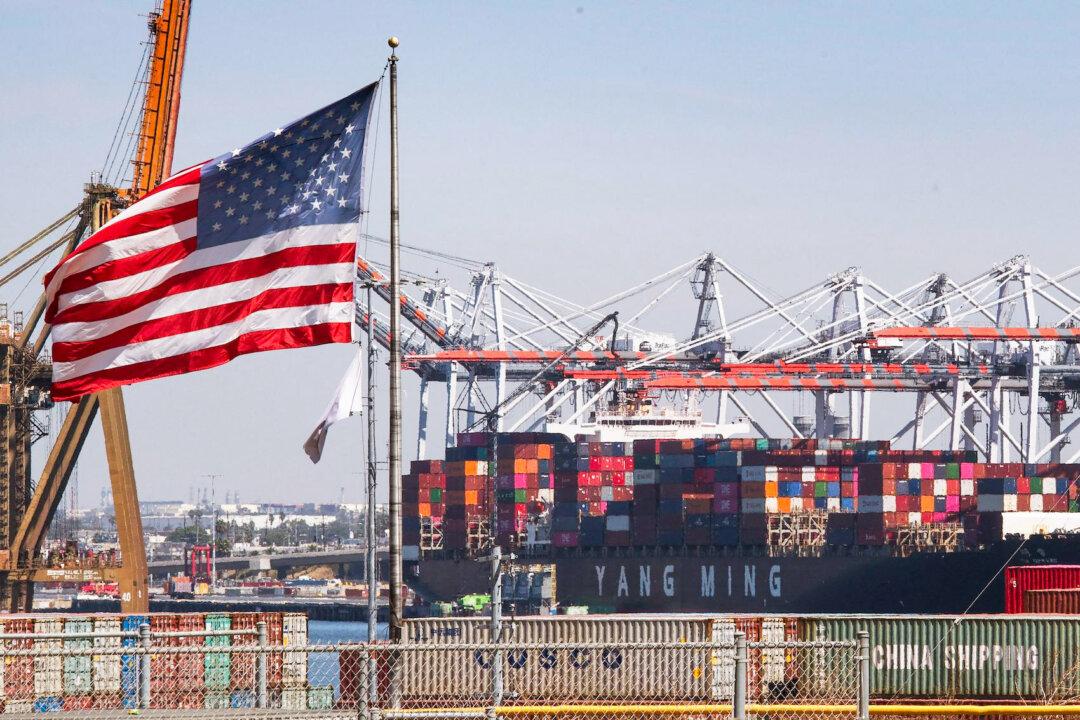President Donald Trump’s return to office is accelerating U.S. decoupling from China, threatening Beijing’s fragile economy with tariffs and legislative crackdowns.
The bipartisan bill follows Trump’s executive order directing officials to review legislative proposals on PNTR. Initially granted in 2000 under the expectation that China would adopt fair trading practices, PNTR status has instead facilitated the depletion of U.S. manufacturing, intellectual property theft, and economic coercion by the CCP.
In the latest survey, completed in November 2024, more than 60 percent of respondents cited U.S.–China tensions as their biggest challenge. This shift will benefit U.S. allies such as India and Southeast Asia, the primary relocation destinations; however, 18 percent of companies are considering moving operations back to the United States, up from 16 percent the previous year.
Muted consumer spending and intensified competition from local Chinese firms have further eroded profitability, with more than half of AmCham China respondents reporting losses for the third consecutive year. As confidence wanes, the share of companies no longer viewing China as a preferred investment destination has surged to 21 percent—double the pre-COVID-19 pandemic level.
China’s recent growth has relied heavily on manufacturing-led exports, particularly electric vehicles and industrial goods. Still, rising tariffs from the United States, Canada, and the European Union now threaten this momentum. At the same time, weak domestic spending remains a major issue, with household consumption contributing just 29 percent to economic activity in late 2024—down from 59 percent pre-pandemic. This decline is further exacerbated by falling property values and stagnant wages, making China increasingly dependent on exports to sustain growth.
China’s population is feeling the economic decline, with more than 900 protests related to economic grievances recorded between June 2024 and September 2024—a 27 percent increase from the previous year, according to China Dissent Monitor. The country’s 5 percent gross domestic product (GDP) growth rate in 2024 is a sharp drop from the 6.7 percent logged in 2016, before Trump’s first presidency. China is even more vulnerable to U.S. trade restrictions this time, as its economy is far more reliant on exports than during Trump’s first term.
Internally, China’s real estate crisis continues to weigh on growth, with investment down by 25 percent from its 2021 peak, following Beijing’s “Three Red Lines” policy, which restricted developer financing. The sector, once accounting for one-third of GDP, remains in turmoil, with millions of stalled pre-sold apartments and mortgage boycotts straining consumer confidence.
Household spending remains weak, accounting for less than 40 percent of GDP, well below global averages. A 2024 survey by China’s central bank found that 62 percent of people preferred to save rather than spend or invest, up from 44 percent in 2018, while only 10 percent of respondents viewed China’s job market positively, down from 16 percent in 2018.
Meanwhile, decoupling from China will strengthen U.S. national security and help rebuild the U.S. manufacturing base. It will also drive investment, job creation, and economic growth in U.S. allies across Asia, as not only American but also European and other foreign companies relocate away from China to avoid U.S. tariffs.







